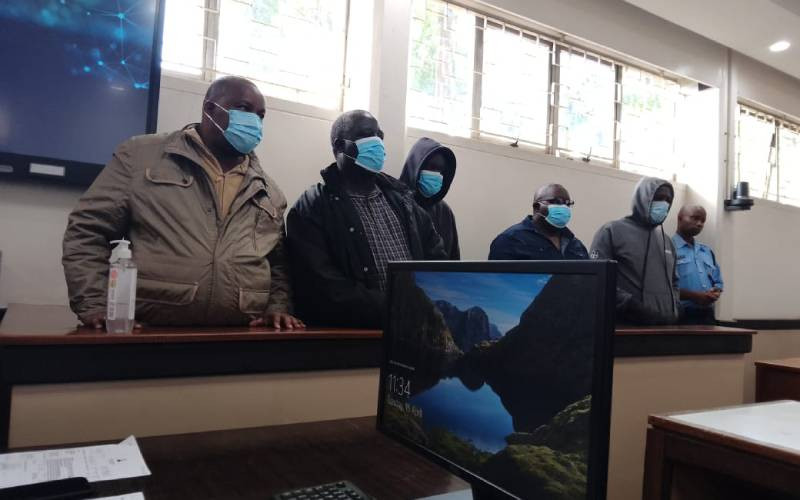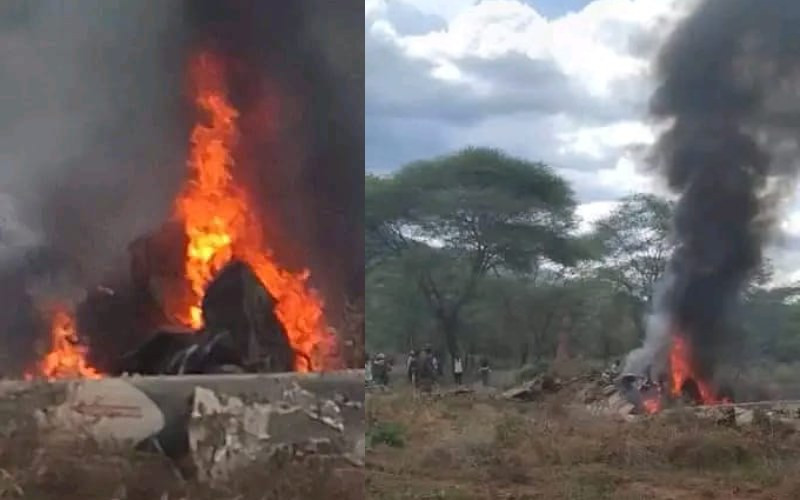Last week the country refreshingly saw the highest judicial officer, the Chief Justice, come down from his high pedestal and confront two administrative weaknesses which have bedevilled the justice system.
The first was his visit to Makadara Courts and thereafter on to Jogoo Road, distributing in the presence of the head of the National Police Service and Officers of the Ethics and Anti- Corruption Commission and the Ombudsman, a pamphlet titled Public information – Directors on Traffic Cases.
Four independent organisations coming together, printing the pamphlets and being aggressive in alleviating roadside and courtroom corruption, harassment and long delays is a step in the right direction. It is anticipated that the motoring community will respond not only by obeying the laws, but also by not condoning bribery.
The ten-point plan is worthy of being publicised. No traffic offender can be held by police for offences punishable by a fine or by imprisonment for a term not exceeding six months – maybe the CJ and EACC can publish a list of these offences in the national press.
Locking up of offenders for minor traffic offences is prohibited, payment of fines will be in court rooms, releasing of accused will be fast-tracked. A suspected offender will be issued with court summons or a Notification to Attend Court (NTAC) on a convenient date within seven days.
The system of pleading guilty is back, albeit differently.
The offender must remit to court the maximum amount payable for the offence cited if the offender opts to plead guilty in writing upon issuance of NTAC.
In practice, these directions will not be a panacea for solving the problems of the justice system. The other side of the coin is the non-appearance of offenders in courts and absconding of offenders, often giving false details of driving licenses and ID cards and addresses.
May be the new e-system of having PIN numbers on the driving licences will assist in tracing or blacklisting offenders – itself a costly and painstakingly laborious process.
The fact of the matter is that countrywide, it is estimated there are over one million cases pending where lame warrants of arrest are flying about without the possibility of ever enforcing the same. Question: how much does it cost to enforce a warrant of arrest for say a speeding offence?
Last week’s second development for which the CJ must get a bouquet is the setting up of the new Directorate of Building Services (DBS) within the judiciary.
In a bid to accelerate its real estate projects and boost expansion of service delivery across the nation, the Judiciary has formed the DBS. The unit to be headed by an architect is staffed with valuers, engineers, electricians and surveyors. It will be responsible for designing court buildings, preparing tender documents and supervising construction works.
Plans are underway to construct 30 new High Court Buildings, rehabilitate 90 magistrate courts and build over 200 new magistrates courts.
With this new unit in place, it is hoped that delays and inefficiencies attributed to external contractors will be history.
Hopefully, the unit will be able to solve mundane problems such as of non-availability of water in the toilets of say Makadara, Kibera and other courts and even the main Milimani Courts, see that taps and toilet seats are not stolen, remove the decaying leaves from the drainages before the El Nino comes out with its full venom.
Stay informed. Subscribe to our newsletter
The unit must get out of the urban courts and give remote stations some logistic sanity; for some courts are forgotten by the administrators of the legal system. Will all the broken chairs, table, benches, and the non functional high-tech gadgetry see a new lease of life?
Oh, how I pray that the Unit visits courts upcountry and far reaching stations where prosecutors and defence lawyers have to fight for a broken seat in crammed up courts which may not have been cleaned for months. Court compounds and corridors are used to dump exhibits.
The CJ must campaign to change the Evidence Act where Exhibits can be photographed and used in evidence and not retained in court custody as is the law now.
I am compelled to give some gratuitous advice to this unit, which I am sure can and will make a difference. First, ban flat-roofed courts (which leak in perpetuity) and second, can we have water harvesting facilities in all courts.
Is there somebody, somewhere, who can put drainage and water storage tanks and piped water facilities say at Makadara or Kibera Courts to help the case of clean justice? Or Should Law Society of Kenya members not undertake a nationwide campaign ‘water for courts”!
Mheshimiwa CJ, thank you for your concern and no barbs for you from me, but a deserving bouquet.
 The Standard Group Plc is a
multi-media organization with investments in media platforms spanning newspaper
print operations, television, radio broadcasting, digital and online services. The
Standard Group is recognized as a leading multi-media house in Kenya with a key
influence in matters of national and international interest.
The Standard Group Plc is a
multi-media organization with investments in media platforms spanning newspaper
print operations, television, radio broadcasting, digital and online services. The
Standard Group is recognized as a leading multi-media house in Kenya with a key
influence in matters of national and international interest.
 The Standard Group Plc is a
multi-media organization with investments in media platforms spanning newspaper
print operations, television, radio broadcasting, digital and online services. The
Standard Group is recognized as a leading multi-media house in Kenya with a key
influence in matters of national and international interest.
The Standard Group Plc is a
multi-media organization with investments in media platforms spanning newspaper
print operations, television, radio broadcasting, digital and online services. The
Standard Group is recognized as a leading multi-media house in Kenya with a key
influence in matters of national and international interest.








